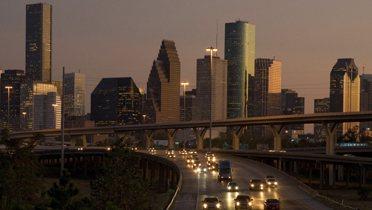In the latest installment of The Economist’s video series “Tea with The Economist,” Bruce Katz discusses the primary ways that metropolitan areas in the United States can collectively propel the country back toward prosperity. Katz emphasizes the need for smarter investments from the public and private sectors and how a shift to a low-carbon economy is vital for maintaining the country’s competitiveness.
Host: Why the focus on metros?
Bruce Katz: Metropolitan areas in the United States and here in Europe really concentrate all the assets that drive prosperity and will drive economic recovery. So the top 100 metropolitan areas in the United States — these are the big cities and the suburbs that surround them — sit on only 12 percent of the land mass, they house two-thirds of the population, they generate about three-quarters of the gross domestic product.
But when it comes to the assets that drive prosperity, they’re about 94 percent of venture capital in the United States, they’ve got all the talented workers, those with graduate degrees, the engineers, the scientists. They’re our freight hubs, rail and air, and they have that quality of place that really attracts, particularly, the younger generation. So they pack a really powerful punch. But the United States tends to think of itself as a network of small towns. It really doesn’t think of itself as a powerful metro nation. So to a large extent the country nor the states, because we are a union of states still in many respects, don’t really leverage the assets in these places.
Host: And what’s the evidence of that? Do they get a disproportionately low amount of state interventions, federal interventions? Do you think, you know, when Washington and state capitals hand out the goodies, they are not focused as much as they should be on what’s best for the metros?
BK: If you take infrastructure and surface transportation, for example, states for the most part spread transportation funding around like peanut butter across a slice of bread. There’s a political logic. You try to meet the political needs of state representatives or state senators rather than focusing on those places where your economy is concentrated, where you’ll get a high return on investment, if you make transformative investments.
So we tend to think that the major ports in the United States like L.A.-Long Beach, the major rail hubs like Chicago, the major air hubs like Memphis and Louisville, they’re on their own. If they’ve got to make major market-shaping investments, don’t look to Washington or your state capital to be your friends, figure it out yourself for the most part. That’s changing a little with the Obama administration, but it’s a slow change.







Commentary
Revitalizing America’s Metro Areas
April 14, 2010